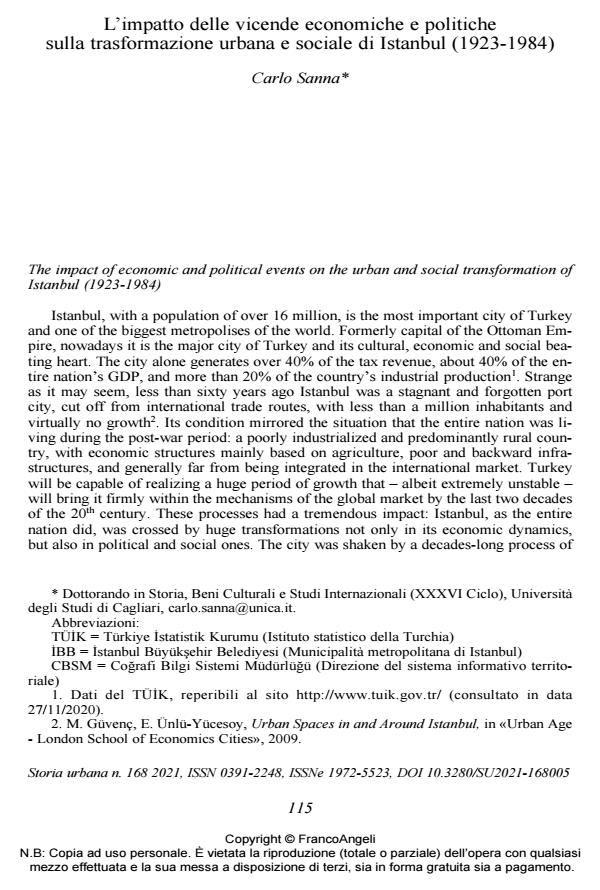The impact of economic and political events on the urban and social transformation of Istanbul (1923-1984)
Journal title STORIA URBANA
Author/s Carlo Sanna
Publishing Year 2021 Issue 2021/168
Language Italian Pages 25 P. 115-139 File size 314 KB
DOI 10.3280/SU2021-168005
DOI is like a bar code for intellectual property: to have more infomation
click here
Below, you can see the article first page
If you want to buy this article in PDF format, you can do it, following the instructions to buy download credits

FrancoAngeli is member of Publishers International Linking Association, Inc (PILA), a not-for-profit association which run the CrossRef service enabling links to and from online scholarly content.
Istanbul, with a population of over 16 million, is the most important city of Turkey and one of the biggest metropolises of the world. Formerly capital of the Ottoman Empire, nowadays it is the major city of Turkey and its cultural, economic and social beating heart. The city alone generates over 40% of the tax revenue, about 40% of the entire nation’s GDP, and more than 20% of the country’s industrial production1. Strange as it may seem, less than sixty years ago Istanbul was a stagnant and forgotten port city, cut off from international trade routes, with less than a million inhabitants and virtually no growth2. Its condition mirrored the situation that the entire nation was living during the post-war period: a poorly industrialized and predominantly rural country, with economic structures mainly based on agriculture, poor and backward infrastructures, and generally far from being integrated in the international market. Turkey will be capable of realizing a huge period of growth that - albeit extremely unstable - will bring it firmly within the mechanisms of the global market by the last two decades of the 20th century. These processes had a tremendous impact: Istanbul, as the entire nation did, was crossed by huge transformations not only in its economic dynamics, but also in political and social ones. The city was shaken by a decades-long process of metamorphosis that took it from being just a big city among others, with its 950 thousand inhabitants in the Fifties, to becoming a huge metropolis of 8 million inhabitants by the Nineties3. The article will focus on how these historical processes have changed the economic, social, demographic structure of Istanbul, laying the foundations for making it the city it is today.
Keywords: Turkey, Istanbul, Urbanization, Gecekondu, Urban development, Communities.
Carlo Sanna, L’impatto delle vicende economiche e politiche sulla trasformazione urbana e sociale di Istanbul (1923-1984) in "STORIA URBANA " 168/2021, pp 115-139, DOI: 10.3280/SU2021-168005